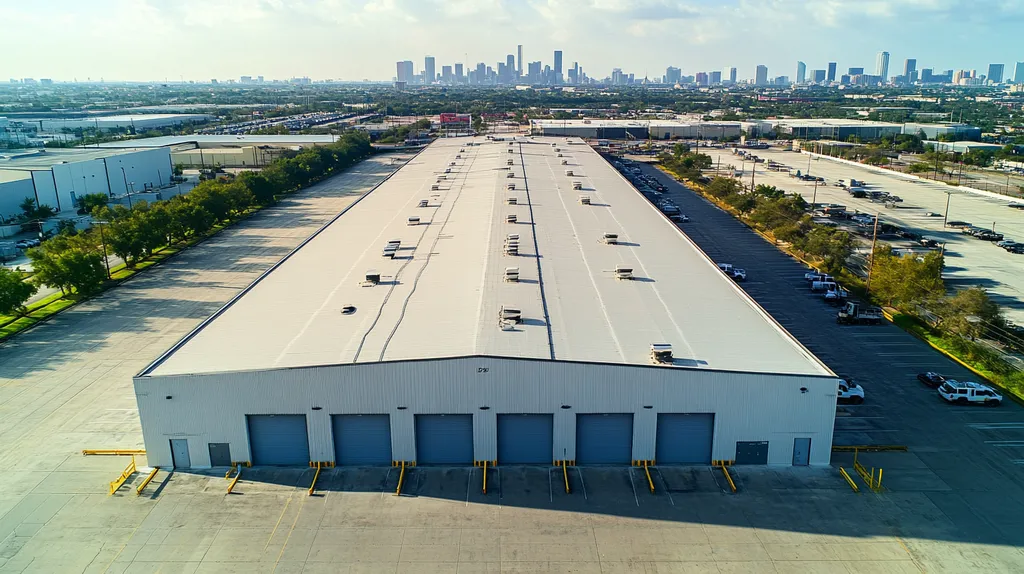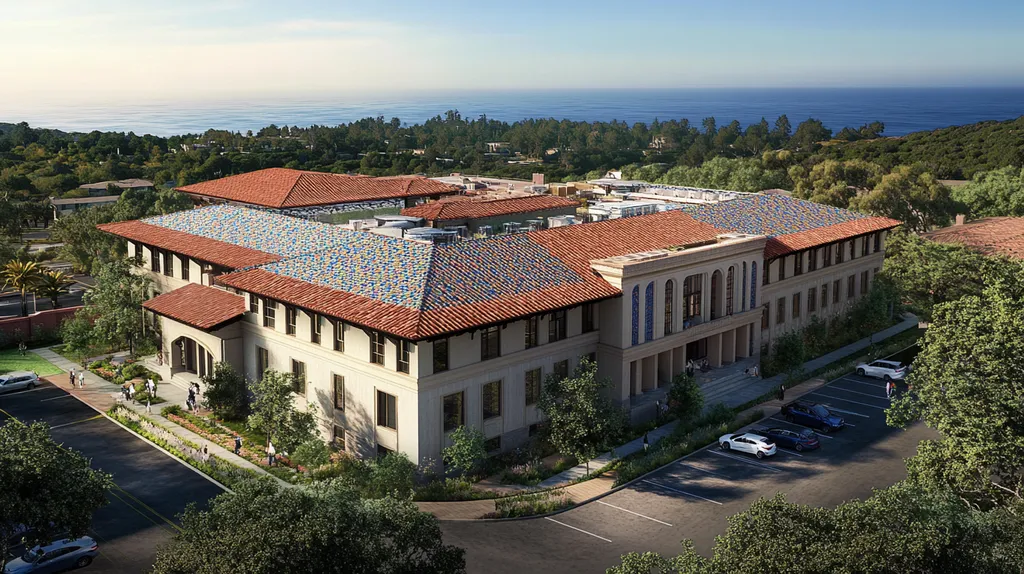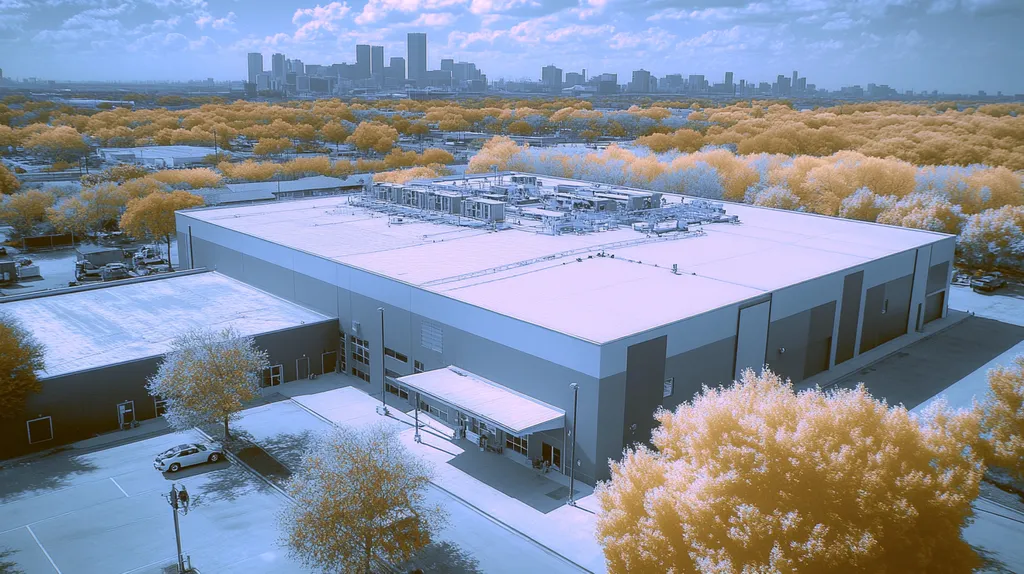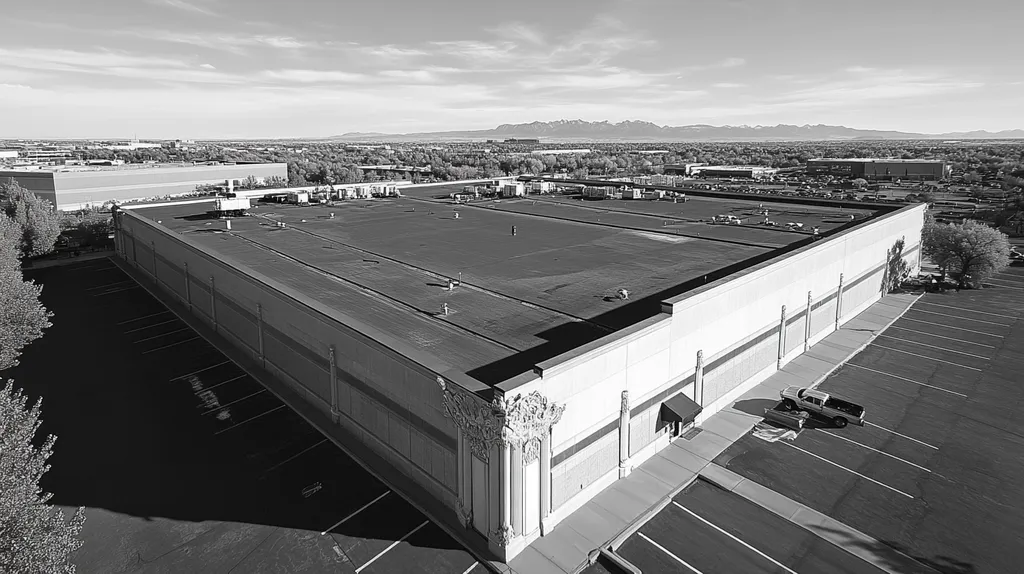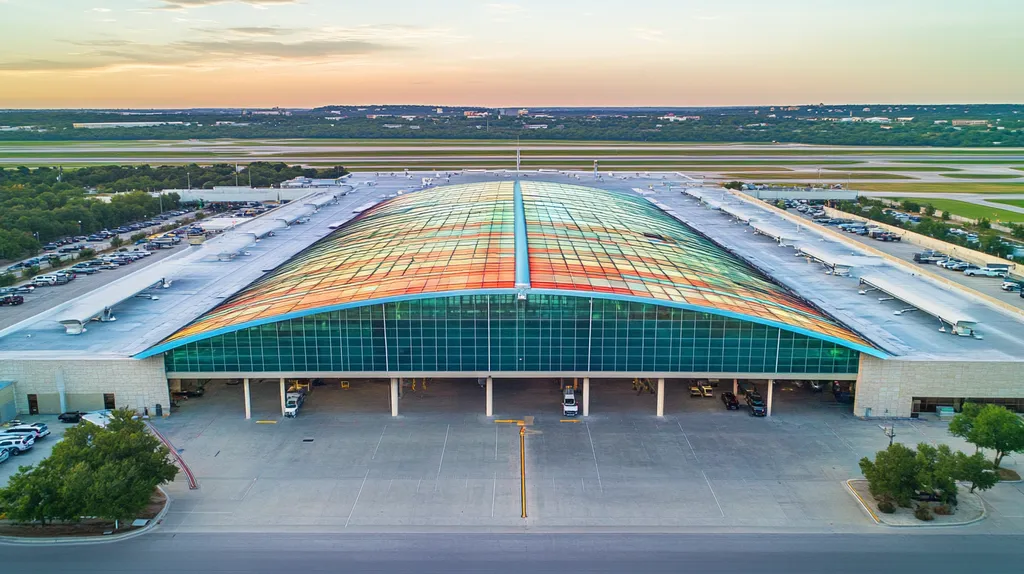Commercial roofing systems suffer over $20 billion in annual damages from pest and rodent infiltration, yet most facilities lack adequate protective materials. Even a quarter-inch gap can allow destructive rodents to breach roofing assemblies within days.
Modern material innovations in pest-resistant roofing now offer facility managers powerful new defenses, from composite membranes with integrated deterrents to specialized barrier systems. However, proper selection and implementation of these materials requires understanding their unique properties and performance characteristics.
This comprehensive guide examines the critical components, installation methods, and maintenance requirements for creating truly pest-resistant commercial roofing systems that protect valuable assets.
SECTION 1: FUNDAMENTAL CONCEPTS
Commercial roofing systems face a persistent yet often overlooked threat: pest and rodent infiltration. These unwanted visitors cause an estimated $20 billion in structural damage annually across U.S. commercial properties. When pests breach a roof’s defense systems, they can compromise insulation, electrical systems, and structural integrity within weeks. Understanding the fundamentals of pest-resistant roofing materials and design is crucial for protecting commercial investments.
Roofing Materials Overview
The foundation of pest resistance begins with material selection. Cellular glass insulation stands among the most effective choices, offering resistance comparable to concrete and sheet metal in preventing pest infiltration. (source: Owens Corning)
Single-ply membranes require careful consideration in pest-prone areas. While these materials offer excellent weather protection, their seams and attachment points need specialized attention to prevent pest entry.
Built-up roofing (BUR) systems provide multiple layers of protection, making them naturally more resistant to pest penetration. However, their gravel surfaces can sometimes harbor small rodents if not properly maintained.
Metal roofing systems excel in pest resistance when properly installed. Their solid construction eliminates many traditional entry points, though particular attention must be paid to panel joints and flashings.
Pest and Rodent Entry Points
Identifying potential access points requires understanding pest behavior patterns. Rodents can squeeze through openings as small as a quarter-inch, while insects need only microscopic gaps to establish colonies.
Roof penetrations present primary vulnerability zones. These include HVAC curbs, pipe boots, drainage systems, and ventilation equipment mounting points.
Expansion joints and seams between roofing sections create natural pathways for pests. Regular inspection of these areas is essential, as thermal cycling can create gaps over time.
Parapet walls and roof edges require particular attention. These transitional areas often develop gaps that serve as pest highways into building envelopes.
Importance of Pest Resistance
Pest infiltration threatens more than just roofing materials. Once established, colonies can compromise electrical systems, communication infrastructure, and fire suppression equipment.
The financial impact extends beyond immediate repair costs. Business interruption, inventory damage, and potential health code violations can multiply the economic consequences of pest intrusion.
Energy efficiency suffers when pests damage insulation systems. Even small compromises in thermal barriers can increase heating and cooling costs by 20% or more.
Prevention through proper material selection and installation proves far more cost-effective than remediation. A pest-resistant roofing system typically costs 15% more initially but can save up to 300% in long-term maintenance and repair expenses.
SECTION 2: SYSTEM COMPONENTS
The integrity of commercial roofing systems faces a critical challenge: each component must work together to create an impenetrable barrier against pest infiltration. A single weak point in these defenses can lead to devastating consequences, with repair costs often exceeding $100,000 for large facilities. Understanding how each system component contributes to pest resistance allows property managers to make informed decisions that protect their investments.
Membrane Materials and Pest Resistance
Membrane selection serves as the first line of defense against pest infiltration. Modern TPO and PVC membranes offer superior resistance through their dense molecular structure and smooth surfaces, making it difficult for pests to establish footholds or create entry points.
Recent advances in membrane technology have introduced embedded pest-deterrent compounds that actively repel rodents and insects. These innovations significantly reduce the likelihood of pest-related damage while maintaining the membrane’s primary waterproofing functions.
The thickness and reinforcement of membranes play crucial roles in pest resistance. Materials exceeding 60 mils in thickness demonstrate superior resistance to gnawing and scratching, particularly in areas where rodent pressure is high.
Proper membrane attachment methods further enhance pest resistance. Fully-adhered systems eliminate the void spaces often found in mechanically-fastened installations, removing potential pest habitats.
Sealant and Flashing Systems
The effectiveness of pest resistance depends heavily on properly sealed transitions and terminations. High-performance sealants with strong adhesion properties create barriers that prevent pests from exploiting gaps and seams.
Metal flashings require careful consideration in material selection and installation. Stainless steel and copper flashings offer superior durability against gnawing rodents, while maintaining their integrity under extreme weather conditions.
Cellular glass insulation proves particularly effective when combined with proper flashing systems, offering resistance comparable to concrete and sheet metal in preventing pest infiltration. (source: Owens Corning Industrial Insulation)
Regular inspection protocols must focus on sealant and flashing integrity. Even minor degradation can create entry points for pests, making early detection and repair essential for maintaining system effectiveness.
Ventilation and Drainage Components
Ventilation systems require specialized design considerations to maintain airflow while preventing pest entry. Stainless steel mesh screens with openings smaller than 1/4 inch effectively block rodents while allowing proper ventilation.
Drainage components must incorporate pest-resistant features without compromising water flow. Dome strainers with integrated pest barriers prevent rodent entry through roof drains while maintaining proper drainage capacity.
Installation of physical barriers around HVAC curbs and other roof penetrations creates additional protection. These barriers, typically made of metal or high-density materials, prevent pests from exploiting these common entry points.
Regular maintenance of ventilation and drainage components ensures continued pest resistance. Quarterly inspections can identify potential vulnerabilities before they become major problems.
SECTION 3: IMPLEMENTATION METHODS
Proper implementation of pest-resistant roofing materials represents a critical investment for commercial property owners. Industry data shows that pest-related damage causes over $45 million in annual roofing repairs across commercial buildings. Without strategic material selection and professional installation, even newly installed commercial roofs can fail within 2-3 years due to pest infiltration. Understanding implementation best practices helps protect this vital building component.
Material Selection for Pest Control
Material selection begins with understanding the local pest pressures and environmental conditions. Dense materials like cellular glass insulation provide superior resistance to rodent damage while maintaining excellent thermal properties.
Reinforced membranes with integrated pest deterrents offer dual protection against both moisture and pest infiltration. These specialized materials include compounds that naturally repel rodents without compromising the membrane’s primary waterproofing function.
High-density foam insulation boards, when properly installed, create an effective barrier against burrowing pests. The closed-cell structure prevents nesting while maintaining thermal efficiency.
Metal components require careful material grade selection to prevent corrosion while resisting pest damage. Stainless steel and copper flashings provide optimal durability against gnawing rodents.
Installation Techniques for Pest Resistance
Professional installation begins with thorough surface preparation and gap identification. Even small voids can provide entry points for pests, making meticulous sealing essential.
Proper seam sealing techniques significantly enhance pest resistance. Continuous weld patterns and reinforced corners create seamless barriers that prevent pest entry while maintaining water tightness.
Installation of protective barriers around roof penetrations requires precise fitting and secure attachment. Metal collars and specialized boots prevent pest access while accommodating thermal movement.
Drainage systems need integrated pest barriers that maintain proper water flow. Specially designed strainers and covers prevent pest entry while ensuring efficient drainage performance.
Integration with Building Codes
Building codes increasingly address pest resistance requirements in commercial roofing. Understanding these regulations ensures compliance while maximizing protection against unwanted infiltration.
Code-compliant installation methods must account for both immediate and long-term pest resistance. This includes proper overlap specifications, attachment patterns, and perimeter securement details.
Regular inspection protocols, mandated by many jurisdictions, help maintain pest resistance over time. These inspections focus on potential entry points and early signs of pest activity.
Documentation of pest-resistant materials and installation methods supports code compliance verification. Maintaining these records proves essential for warranty claims and building certification requirements.
SECTION 4: MAINTENANCE REQUIREMENTS
Effective maintenance of pest-resistant roofing systems represents a critical investment for commercial property owners. Industry data shows that inadequate maintenance leads to a 300% increase in pest-related repair costs within the first five years of installation. Without proper oversight and regular maintenance, even the most sophisticated pest-resistant materials can fail, leading to structural damage and business disruption that averages $175,000 per incident.
Regular Inspection Protocols
Professional roof inspections should occur quarterly, with specialized pest assessments conducted bi-annually. These evaluations must focus on common entry points, including penetrations, seams, and drainage systems.
Documentation plays a crucial role in tracking potential vulnerabilities. Digital mapping of inspection findings helps identify patterns of pest activity and guides preventive measures.
Thermal imaging and moisture detection equipment enhance inspection accuracy. These tools can identify concealed pest activity before visible damage occurs.
Training maintenance staff in pest identification improves daily monitoring effectiveness. This enables early detection of warning signs between formal inspections.
Repairing Pest Damage to Roofs
Steel components offer superior durability and resistance against pest damage, particularly in areas prone to rodent activity. These materials provide long-term protection while maintaining structural integrity. (source: Titan Steel Structures)
Immediate repair of identified damage prevents escalation of pest problems. Small entry points can quickly expand, compromising larger sections of roofing systems.
Repair materials must match or exceed the pest resistance of original installations. Using inferior materials creates weak points that attract renewed pest activity.
Post-repair inspections ensure proper integration with existing systems. These checks verify that repairs maintain continuous pest barriers throughout the roof assembly.
Preventative Maintenance Strategies
Establishing clear maintenance schedules reduces the risk of pest infiltration. Regular cleaning removes debris that could harbor pests or provide nesting materials.
Physical barriers require periodic assessment and replacement. Weather exposure can degrade even the most durable pest prevention components.
Drainage system maintenance prevents water accumulation that attracts pests. Proper slope and flow maintenance discourage pest activity while protecting roof integrity.
Coordination between pest control and roofing maintenance teams enhances prevention effectiveness. This integrated approach ensures that pest control measures don’t compromise roofing materials.
SECTION 5: PERFORMANCE METRICS
Performance metrics for pest-resistant roofing materials directly impact a facility’s operational costs and structural integrity. Recent industry data shows that inadequate pest resistance leads to an average of $150,000 in repair costs per commercial building annually. Understanding and measuring these metrics helps facility managers make informed decisions about material selection and maintenance protocols, ultimately protecting their substantial roofing investments.
Durability and Lifespan Assessments
Durability testing for pest-resistant roofing materials involves rigorous evaluation under simulated environmental conditions. These tests measure resistance to UV exposure, thermal cycling, and physical stress while maintaining pest barrier integrity.
Accelerated aging tests expose materials to concentrated environmental factors, compressing decades of wear into months of laboratory evaluation. This data helps predict long-term performance and maintenance requirements.
Impact resistance testing ensures materials can withstand physical damage while maintaining their pest-resistant properties. Materials must demonstrate resistance to punctures, tears, and mechanical stress without compromising their protective barriers.
Warranty coverage often correlates directly with proven durability metrics. Premium pest-resistant materials typically carry 20-30 year warranties, reflecting manufacturer confidence in long-term performance.
Pest Resistance Testing Methods
Standardized testing protocols evaluate material resistance to common pest threats. Stainless steel-based barriers demonstrate superior resistance to rodent penetration, as validated through USDA/APHIS laboratory testing. (source: Xcluder)
Chemical resistance evaluations ensure pest-deterrent compounds remain active throughout the material’s service life. These tests simulate exposure to cleaning agents, environmental pollutants, and typical rooftop conditions.
Seam and joint testing focuses on vulnerable transition points where pest infiltration commonly occurs. Materials must demonstrate consistent resistance across these critical areas to achieve certification.
Field performance monitoring provides real-world validation of laboratory results. Documentation of actual pest resistance helps refine testing protocols and improve material specifications.
Energy Efficiency Evaluations
Energy performance metrics consider both thermal resistance and air barrier integrity. Pest-resistant materials must maintain these properties while preventing infiltration.
R-value testing ensures insulation materials retain their thermal efficiency even when incorporating pest-resistant features. This includes evaluation of thermal bridging at protective barrier locations.
Air infiltration testing identifies potential weaknesses in the building envelope. Materials must demonstrate both pest resistance and air barrier performance to meet modern building standards.
Cost-benefit analyses quantify energy savings against pest protection investments. High-performance materials typically demonstrate ROI within 3-5 years through reduced maintenance and energy costs.
SECTION 6: OPTIMIZATION STRATEGIES
Pest and rodent infiltration costs commercial property owners over $2 billion annually in structural damage and business disruption. Modern optimization strategies can reduce these losses by up to 85% through targeted material selection and design improvements. Without proper optimization, even newly installed commercial roofs can develop pest vulnerabilities within their first year, leading to premature system failure and costly repairs.
Material Upgrade Recommendations
High-performance composite materials represent the foundation of modern pest-resistant roofing. These advanced materials combine traditional waterproofing capabilities with enhanced mechanical resistance to pest damage.
Specialized rodent-proof barriers incorporating Kevlar and stainless steel mesh provide superior protection at critical points. These flexible systems effectively seal building perimeters while accommodating structural movement and thermal expansion. (source: Rentokil Singapore)
Multi-layer membrane systems with integrated pest deterrents offer comprehensive protection. These systems combine physical barriers with chemical deterrents that remain active throughout the membrane’s service life.
Advanced sealant technologies featuring metallic reinforcement prevent pest infiltration at joints and transitions. These materials maintain flexibility while resisting gnawing and scratching from determined rodents.
Enhancing Pest Resistance through Design
Strategic design modifications can significantly enhance a roof’s pest resistance without compromising its primary functions. Eliminating unnecessary penetrations and consolidating necessary ones reduces potential entry points.
Integration of pest-resistant features during the design phase proves more cost-effective than retrofitting. This includes proper placement of mechanical equipment, careful consideration of drainage paths, and strategic use of physical barriers.
Positive drainage design eliminates standing water that attracts pests while preventing material degradation. Proper slope and drainage calculations ensure water moves efficiently off the roof surface.
Careful detailing around roof penetrations creates redundant protection against pest entry. This includes elevated curbs, mechanical screens, and reinforced flashing assemblies.
Cost-Benefit Analysis for Upgrades
Initial investment in pest-resistant materials typically adds 15-20% to standard roofing costs. However, these upgrades reduce annual maintenance expenses by up to 40% while extending system lifespan.
Energy savings from better-sealed building envelopes offset material upgrade costs. Properly detailed pest resistance features improve overall thermal performance and air barrier effectiveness.
Insurance premiums often decrease with documented pest resistance measures. Many carriers offer rate reductions of 5-15% for buildings with comprehensive pest prevention systems.
Return on investment calculations show pest-resistant upgrades typically pay for themselves within 3-5 years. This timeline shortens in areas with high pest pressure or where business interruption costs are significant.
The Bottom Line
With pest-related roofing damage exceeding $20 billion annually, the selection of appropriate pest-resistant materials represents a critical priority for commercial property owners.
Modern material innovations now provide comprehensive solutions, from composite membranes with integrated deterrents to specialized barrier systems incorporating stainless steel and Kevlar components.
While pest-resistant upgrades typically add 15-20% to initial roofing costs, they reduce annual maintenance expenses by up to 40% while extending system lifespan.
Property owners who implement these advanced materials and follow proper maintenance protocols can expect to eliminate up to 85% of pest-related damages, with upgrade costs typically recovered within 3-5 years through reduced repairs and increased energy efficiency.
FREQUENTLY ASKED QUESTIONS
Q. What threats do pests pose to commercial roofs?
A. Pests can cause significant structural damage, compromise insulation, and disrupt electrical systems. Their presence can lead to costly repairs and increased energy costs due to damage in commercial properties.
Q. How does the membrane material affect industrial roofs’ pest resistance?
A. Membrane materials such as TPO and PVC provide excellent pest resistance through durable structures. Choosing thicker membranes and proper attachment methods can further enhance protection against pest infiltration.
Q. What installation techniques improve pest resistance in commercial roofs?
A. Professional installation should include thorough surface preparation and rigorous seam sealing. Additionally, fitting metal barriers around roof penetrations prevents pests from accessing the roofing system effectively.
Q. How often should maintenance checks be performed on commercial roofs?
A. Roof inspections should ideally occur quarterly, with specialized pest assessments bi-annually. This routine ensures early detection of vulnerabilities that could allow pest infiltration.
Q. What performance metrics indicate effective pest-resistant materials?
A. Assess durability and lifespan through rigorous testing, including UV and impact resistance. Warranty coverage typically reflects material quality, with longer terms indicating greater confidence in pest protection performance.
Q. What design strategies can further improve industrial roof pest resistance?
A. Consider consolidating roof penetrations and eliminating unnecessary ones. Positive drainage design can also help prevent water accumulation that attracts pests, enhancing overall roof integrity.
Q. What latest innovations exist for pest-resistant commercial roofing?
A. Recent innovations include membranes with embedded pest-repellent compounds and advanced sealants. These materials enhance protection against both moisture and pest infiltration, ensuring long-term system performance.

